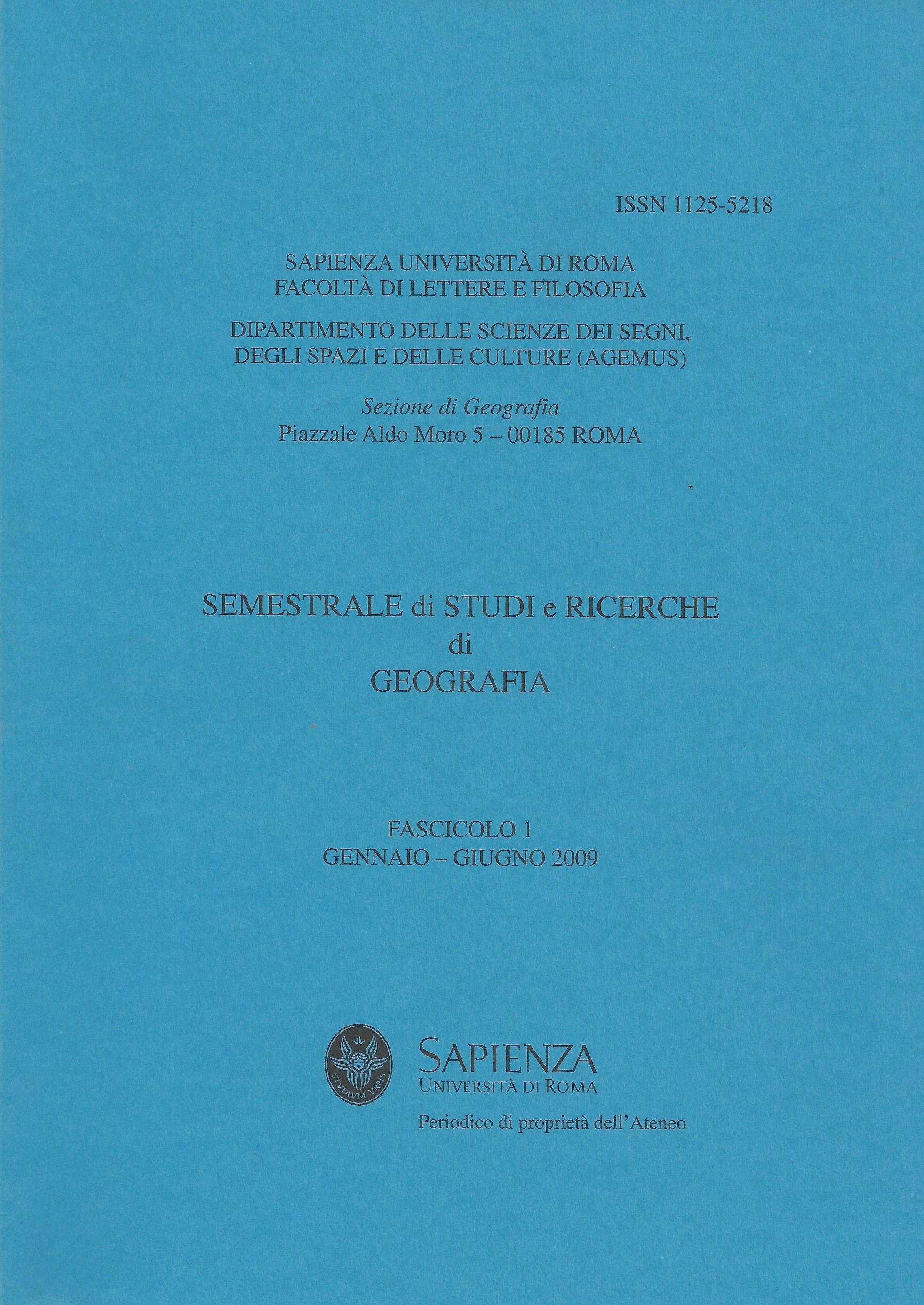Tre secoli raccontati nelle piante storiche di Roma
DOI:
https://doi.org/10.13133/1125-5218.15281Abstract
The present work stems from the study of historical Roman maps,
maps of Rome that are artistic masterpieces but also useful documents
in retracing the urban, architectonic, social and economic growth in
the eternal city. This is just an example of the spatial analysis that can
be made with historical maps, which are rich in information and full of
important details that can be studied one by one. In this article we
have examined the urban changes and the water distribution inside
the ancient wall of Rome, using the maps of the XVIth, XVIIth and
XVIIIth centuries. Not confining ourselves to the most famous maps
such as the work of E. Du Perac, A. Tempesta, G. Maggi and G.B. Falda,
we also analyzed those less well-known, but yet useful for achieving
our purpose.
Ce travail est le fruit d’une observation des cartes historiques de Rome,
de véritables chefs d’oeuvre artistiques mais aussi de témoignages
utiles pour connaitre l’évolution urbaine, architectonique, sociale, et
économique de la ville éternelle. Ce que l’on désire suggérer ici, est
seulement un exemple d’analyse de l’espace conduit, en employant
des cartes riches d’informations et de détails qui pourraient être étudiées
une par une.
A propos de cet article, nous avons examiné les changements urbains
et la distribution de l’eau au sein des murs Auréliens à travers l’observation des plans du XVI, XVII siècles. Ceci, sans nous limiter uniquement aux plus célèbres comme celles réalisées par E. Du Perac, A.
Tempesta, G. Maggi, et G.B. Falda, mais en nous intéressant également
à celles moins connues, et néanmoins utiles, afin d’atteindre notre objectif.
##submission.downloads##
Fascicolo
Sezione
Licenza
Gli autori che pubblicano su questa rivista accettano le seguenti condizioni:- Gli autori mantengono i diritti sulla loro opera e cedono alla rivista il diritto di prima pubblicazione dell'opera, contemporaneamente licenziata sotto una Licenza Creative Commons - Attribuzione che permette ad altri di condividere l'opera indicando la paternità intellettuale e la prima pubblicazione su questa rivista.
- Gli autori possono aderire ad altri accordi di licenza non esclusiva per la distribuzione della versione dell'opera pubblicata (es. depositarla in un archivio istituzionale o pubblicarla in una monografia), a patto di indicare che la prima pubblicazione è avvenuta su questa rivista.
- Gli autori possono diffondere la loro opera online (es. in repository istituzionali o nel loro sito web) prima e durante il processo di submission, poiché può portare a scambi produttivi e aumentare le citazioni dell'opera pubblicata (Vedi The Effect of Open Access).


